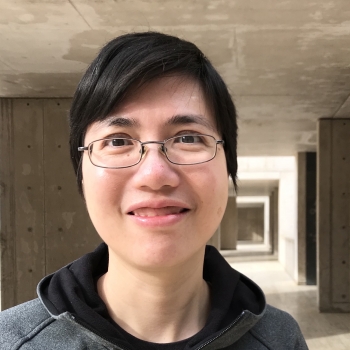
Year of Graduation:
Advisors/Lab:
Current Position:
About the lab
We are in the Center for Genomics and Systems Biology, Department of Biology at New York University. Our lab uses both “dry”- and “wet”-lab genomics methods to study gene regulation at the systems level. Specifically, we are interested in understanding how the repertoire of genome and epigenome variations at the levels of individual and population give rise to phenotypic variations in realistic environment. The extensive intra-specific genome and epigenome variation and adaptability to the environment found in the plant kingdom provide rich resources to investigate this question. Working with the reference plant Arabidopsis and extending to agriculturally and ecologically important plants, we focus on three related topics:
- identifying genomic and epigenomic determinants of intra-specific transcriptional variation;
- using single cell sequencing methods to characterize cell type-specific responses;
- mapping population- and cell type-specific regulatory networks in hormone responses.
Research areas
- Computational biology
- Genomics
- Transcriptional regulation
- Natural variation
Doctoral Thesis Title: A constraint optimization framework for discovery of cellular signaling and regulatory networks
Publications while at MIT:
1. Network modeling of kinase inhibitor polypharmacology reveals pathways targeted in chemical screens.
Ursu O, Gosline SJC, Beeharry N, Fink L, Bhattacharjee V, Huang SC, Zhou Y, Yen T, Fraenkel E.
PLoS One. 2017 Oct 12;12(10):e0185650. doi: 10.1371/journal.pone.0185650. eCollection 2017.
PMID:29023490 Free PMC Article
Huang SS,Clarke DC, Gosline SJ, Labadorf A, Chouinard CR, Gordon W, Lauffenburger DA, Fraenkel E.
PLoS Comput Biol. 2013;9(2):e1002887. doi: 10.1371/journal.pcbi.1002887. Epub 2013 Feb 7.
PMID:23408876 Free PMC Article
Tuncbag N, Braunstein A, Pagnani A, Huang SS, Chayes J, Borgs C, Zecchina R, Fraenkel E.
J Comput Biol. 2013 Feb;20(2):124-36. doi: 10.1089/cmb.2012.0092.
PMID:23383998 Free PMC Article
Tuncbag N, McCallum S, Huang SS, Fraenkel E.
Nucleic Acids Res. 2012 Jul;40(Web Server issue):W505-9. doi: 10.1093/nar/gks445. Epub 2012 May 25.
PMID:22638579 Free PMC Article
Huang SS, Fraenkel E.
Methods Cell Biol. 2012;110:57-80. doi: 10.1016/B978-0-12-388403-9.00003-5.
PMID:22482945 Free PMC Article
Huang SS, Fraenkel E.
Sci Signal. 2009 Jul 28;2(81):ra40. doi: 10.1126/scisignal.2000350.
PMID:19638617 Free PMC Article
